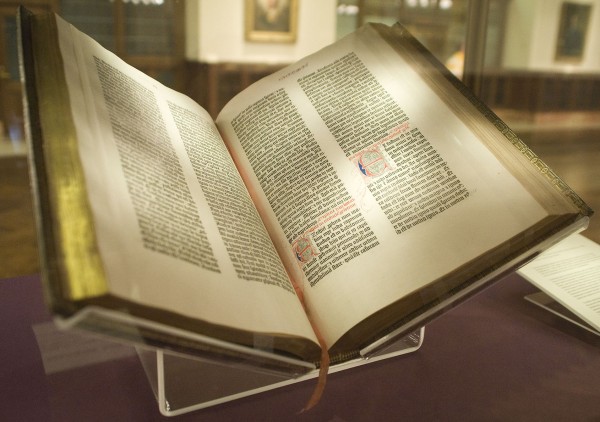NOTE: This post was originally published as a bulletin article and on the merkelchurchofchrist.org blog
“ [Jesus] went to Nazareth, where he had been brought up, and on the Sabbath day he went into the synagogue, as was his custom. He stood up to read, and the scroll of the prophet Isaiah was handed to him.” Luke 4:16-17 (NIV)
The congregational reading of scriptures in synagogues was a foundational part of Jewish life when Jesus was growing up, a custom carried on in the early church of Christ. There were practical reasons for public reading the scriptures; because each copy was hand written (that’s what manuscript means), communities of believers had to share limited manuscripts or in some cases, like letters from Apostles, share with other communities.
 The invention of the printing press and subsequent printing of the first Bible in the 1450s led to many positive advances in Christianity like the reformation movement and personal Bible study. However, the printed Bible did not change Paul’s instructions concerning the conduct of Timothy and the early church:
The invention of the printing press and subsequent printing of the first Bible in the 1450s led to many positive advances in Christianity like the reformation movement and personal Bible study. However, the printed Bible did not change Paul’s instructions concerning the conduct of Timothy and the early church:
“…devote yourself to the public reading of Scripture, to preaching and to teaching.” 1 Timothy 4:13(NIV)
Beginning this Sunday we will incorporate scripture reading into our morning worship assembly (ekklésia). Like the early church we will hear the Word of God as one body and one heart. I encourage you to bring your Bibles and follow along as we begin reading the Gospel of John. We will be using New International Version which, according to a recent survey, is the translation most used in churches of Christ.
“Blessed is the one who reads aloud the words of this prophecy, and blessed are those who hear it and take to heart what is written in it, because the time is near.” Revelation 1:3 (NIV)
Shalom
